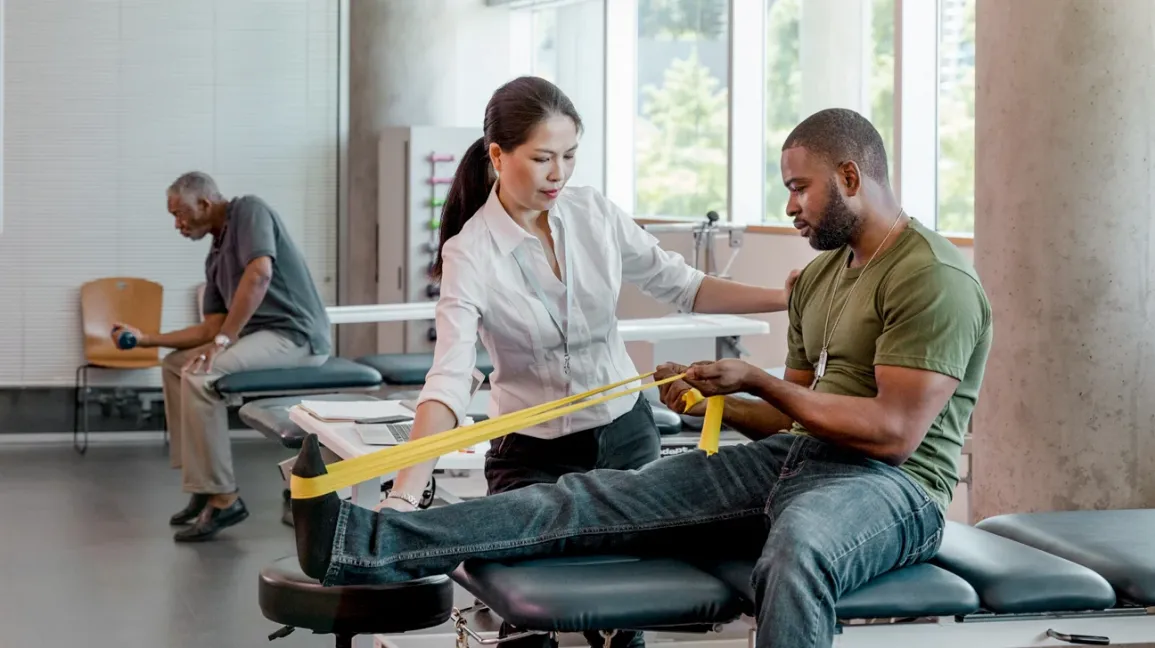Physical therapy (PT) is a healthcare profession that helps people improve their mobility, reduce pain, and prevent or manage chronic conditions. PTs use a variety of techniques, including exercise, manual therapy, and electrotherapy, to help their patients achieve their goals.
What is physical therapy?
Physical therapy is a broad term that encompasses a variety of treatment techniques. Some of the most common physical therapy interventions include:
- Exercise: PTs use exercise to improve strength, range of motion, and endurance. They may also prescribe specific exercises to help patients manage pain or improve balance.
- Manual therapy: PTs use their hands to manipulate the body’s tissues. This can include techniques such as massage, stretching, and joint mobilization.
- Electrotherapy: PTs use electrical stimulation to reduce pain, improve muscle function, and promote healing.
- Heat and cold therapy: PTs use heat and cold to reduce pain, inflammation, and muscle spasms.
- Hydrotherapy: PTs use water to provide resistance, buoyancy, and temperature changes to help patients improve their mobility and function.
Who can benefit from physical therapy?
Physical therapy can benefit people of all ages and with a variety of conditions. Some of the most common conditions that are treated with physical therapy include:
- Back pain
- Neck pain
- Shoulder pain
- Knee pain
- Hip pain
- Arthritis
- Carpal tunnel syndrome
- Stroke
- Brain injury
- Spinal cord injury
- Cerebral palsy
- Multiple sclerosis
- Parkinson’s disease
How does physical therapy work?
Physical therapy works by addressing the underlying cause of a patient’s pain or dysfunction. For example, if a patient has back pain, the PT will first assess the patient’s posture, flexibility, and strength. The PT will then develop a treatment plan that addresses these specific areas. The treatment plan may include exercises to improve flexibility and strength, manual therapy to release tight muscles, and electrotherapy to reduce pain.
PT is a safe and effective treatment for a variety of conditions. It is important to work with a qualified PT who can develop a treatment plan that is tailored to your individual needs.
What are the benefits of physical therapy?
The benefits of physical therapy are numerous. Some of the most common benefits include:
- Reduced pain
- Improved mobility
- Increased range of motion
- Improved strength
- Improved balance
- Reduced risk of falls
- Improved quality of life
How long does physical therapy last?
The length of time that you need physical therapy will vary depending on your condition and your progress. Some people may only need a few weeks of therapy, while others may need several months or even years. Your PT will be able to give you an estimate of how long you will need therapy based on your individual needs.
Is physical therapy covered by insurance?
Insurance coverage for physical therapy varies depending on your plan. Some plans will cover all or part of the cost of therapy, while others may require you to pay a copayment or deductible. You should contact your insurance company to find out what your coverage is for physical therapy.
How can I find a physical therapist?
The best way to find a physical therapist is to ask your doctor for a referral. You can also search for physical therapists in your area online or in the phone book. When you are interviewing physical therapists, be sure to ask about their experience, qualifications, and treatment philosophy. It is also important to feel comfortable with the physical therapist and their staff.
Conclusion
Physical therapy is a safe and effective treatment for a variety of conditions. It can help to reduce pain, improve mobility, and improve your overall quality of life. If you are experiencing pain or dysfunction, talk to your doctor about whether physical therapy could be right for you.thumb_upthumb_downtuneshareGoogle itmore_vertadd_circle






